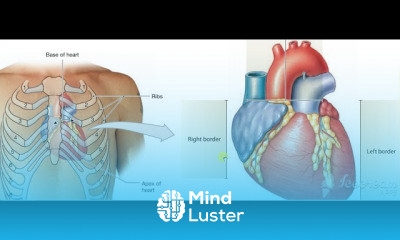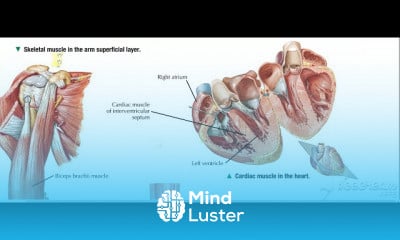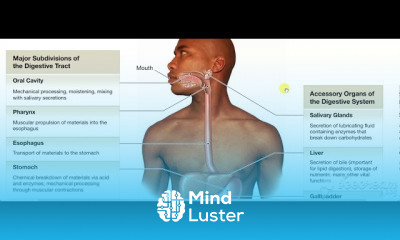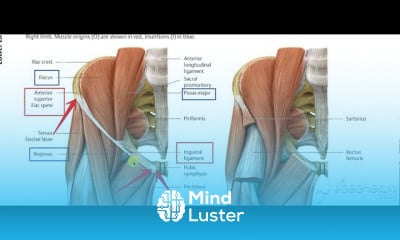Thyroid hormone 2
Share your inquiries now with community members
Click Here
Sign up Now
Lessons List | 21
Lesson
Comments
Related Courses in Medical
Course Description
The thyroid, or thyroid gland, is an endocrine gland in vertebrates. In humans it is in the neck and consists of two connected lobes. The lower two thirds of the lobes are connected by a thin band of tissue called the thyroid isthmus. The thyroid is located at the front of the neck, below the Adam's apple. Microscopically, the functional unit of the thyroid gland is the spherical thyroid follicle, lined with follicular cells (thyrocytes), and occasional parafollicular cells that surround a lumen containing colloid. The thyroid gland secretes three hormones: the two thyroid hormones – triiodothyronine (T3) and thyroxine (T4) – and a peptide hormone, calcitonin. The thyroid hormones influence the metabolic rate and protein synthesis, and in children, growth and development. Calcitonin plays a role in calcium homeostasis.[1] Secretion of the two thyroid hormones is regulated by thyroid-stimulating hormone (TSH), which is secreted from the anterior pituitary gland. TSH is regulated by thyrotropin-releasing hormone (TRH), which is produced by the hypothalamus.
The thyroid gland develops in the floor of the pharynx at the base of the tongue at 3–4 weeks gestation; it then descends in front of the pharyngeal gut, and ultimately over the next few weeks, it migrates to the base of the neck. During migration, the thyroid remains connected to the tongue by a narrow canal, the thyroglossal duct. At the end of the fifth week the thyroglossal duct degenerates, and over the following two weeks the detached thyroid migrates to its final position.
Euthyroid is the term used to describe a state of normal thyroid function in the body. Thyroid disorders include hyperthyroidism, hypothyroidism, thyroid inflammation (thyroiditis), thyroid enlargement (goitre), thyroid nodules, and thyroid cancer. Hyperthyroidism is characterized by excessive secretion of thyroid hormones: the most common cause is the autoimmune disorder Graves' disease. Hypothyroidism is characterized by a deficient secretion of thyroid hormones: the most common cause is iodine deficiency. In iodine-deficient regions, hypothyroidism secondary to iodine deficiency is the leading cause of preventable intellectual disability in children. In iodine-sufficient regions, the most common cause of hypothyroidism is the autoimmune disorder Hashimoto's thyroiditis.
The presence of the thyroid and its various diseases have been noted and treated for centuries, although the gland itself has only been described and named since the Renaissance.[4] Knowledge of the thyroid, its biochemistry, and its disorders developed throughout the late nineteenth and twentieth centuries. Many modern treatments and investigative modalities evolved throughout the mid-twentieth century, including refinement of surgical techniques for thyroid removal (thyroidectomy) for the treatment of goitre; the use of radioactive iodine and thiouracil for the treatment of Graves' disease; and fine needle aspiration for diagnosis of thyroid nodules.
Trends
Python programming language
MS Excel
Creating Professional emails in excel with AI
Programming basics for beginners
Learning English Speaking
Java Programming Language
RPA Robotic Process Automation
AI fundamentals for beginners
C Programming from scratch
Building a Website with HTML CSS
Python Programming | Edureka
C Programming Language
Video editing with adobe premiere
Cybersecurity
Online digital marketing from home
python programming essentials for beginners
Creating bitmap images from scratch
English greetings and responses
IT career
ChatGPT for marketing beginners
Recent
CANVA templates for beginners
Download SCADA software for beginners
Setting Up Your AWS Cloud account
Windows 10 troubleshooting for beginners
Website design with PHP and MYSQL
Downloading autoCAD files for beginners
Setting up Photoshop for web design
MS excel keyboard Shortcuts for beginners
Autodesk inventor 2025 for beginners
Features of SQL server for beginners
Windows 11 installation for beginners
Installing android studio for kotlin
Sending and receiving email in outlook
Windows Server 2019 administration essentials
Networking with cisco CCNA 200 301
Relation types in Primavera P6
Downloading and installing Power BI desktop
Form designing fundamentals in excel
Creating and managing To do lists in outlook
Calculating Payrolls in excel


















